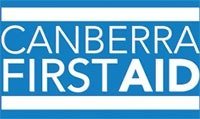Canberra First Aid Courses. Snakes are out guys so be prepared. Book in now to learn the first aid skills to save a life. Summer fun first aid courses in Canberra.
Is this Canberra’s version of the Loch Ness Monster? The Lake Burley Griffin Serpent?
Glenn Dunbier said his 18-year-old son Dave on Thursday morning took this pic of what appears to be a large brown snake on a footpath alongside Lake Burley Griffin near the Kingston Foreshore.
 This snake was snapped hauling itself out of Lake Burley Griffin near the Kingston Foreshore on Thursday morning. Photo: Supplied
This snake was snapped hauling itself out of Lake Burley Griffin near the Kingston Foreshore on Thursday morning. Photo: Supplied
Glenn reckoned the snaked appeared to have hauled itself out of the water.
“It was dragging itself up onto the path so Dave presumed it had been in the lake. It must have been – there’s only water at the other end of it,” Glenn said.
“There was only Dave and a woman walker there – she stopped and took a photo too. He then raced off to uni so has no idea where it went after that.”
It was not the only snake to be spotted in the lake this week. A runner around Lake Burley Griffin snapped a brown snake swimming in the lake on Sunday about 1pm.
Gretchen Smith said the snake was just under the Kings Avenue Bridge on the north side of the lake.
“It then looked as though it was trying to find a way to get out, and started swimming further along to where the wall stops and the bank is a little lower. I didn’t hang around to find out if it got out or not, as I didn’t want to draw people’s attention to it.
“Unfortunately, I know people can overreact when they see snakes, and didn’t want to put the snake in harms way.”
Gretchen said she didn’t find snakes frightening.
“I actually thought it was an eel at first, and in all honesty, that would’ve scared me way more than a snake,” she said.
” I have a friend on Instagram though who swims in the lake for triathlons. She didn’t seem at all excited about the snake; her words were: ‘Don’t need any other obstacles, swim is hard enough!’.”
Luke Dunn, owner of Canberra Snake Rescue and Relocation, said they were likely Eastern Brown snakes.
“They are the most common in the suburban areas and they are relatively good swimmers,” he said.
Mr Dunn said so far, it has been an average year for snake-catching.
A City Services Directorate spokesman said snake season had started in Canberra.
“Snakes are most active in Canberra from October to March when they sun themselves or when they move in search of food or water,” he said.
“If you encounter one the best advice is to leave it alone until it moves away.
“If people see snakes in potentially dangerous situations such as in their garage/property they can contact Access Canberra on 13 22 81.”














